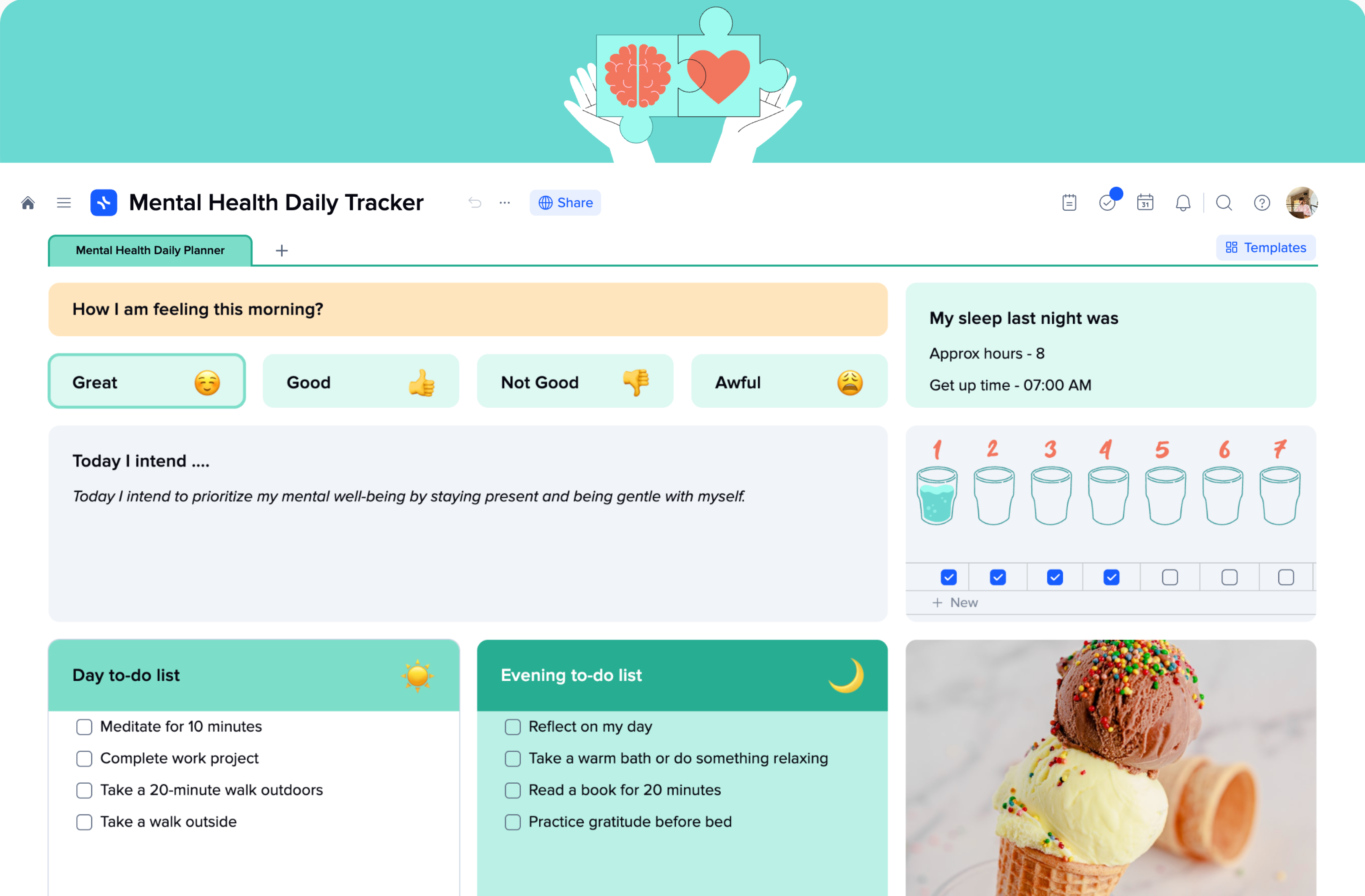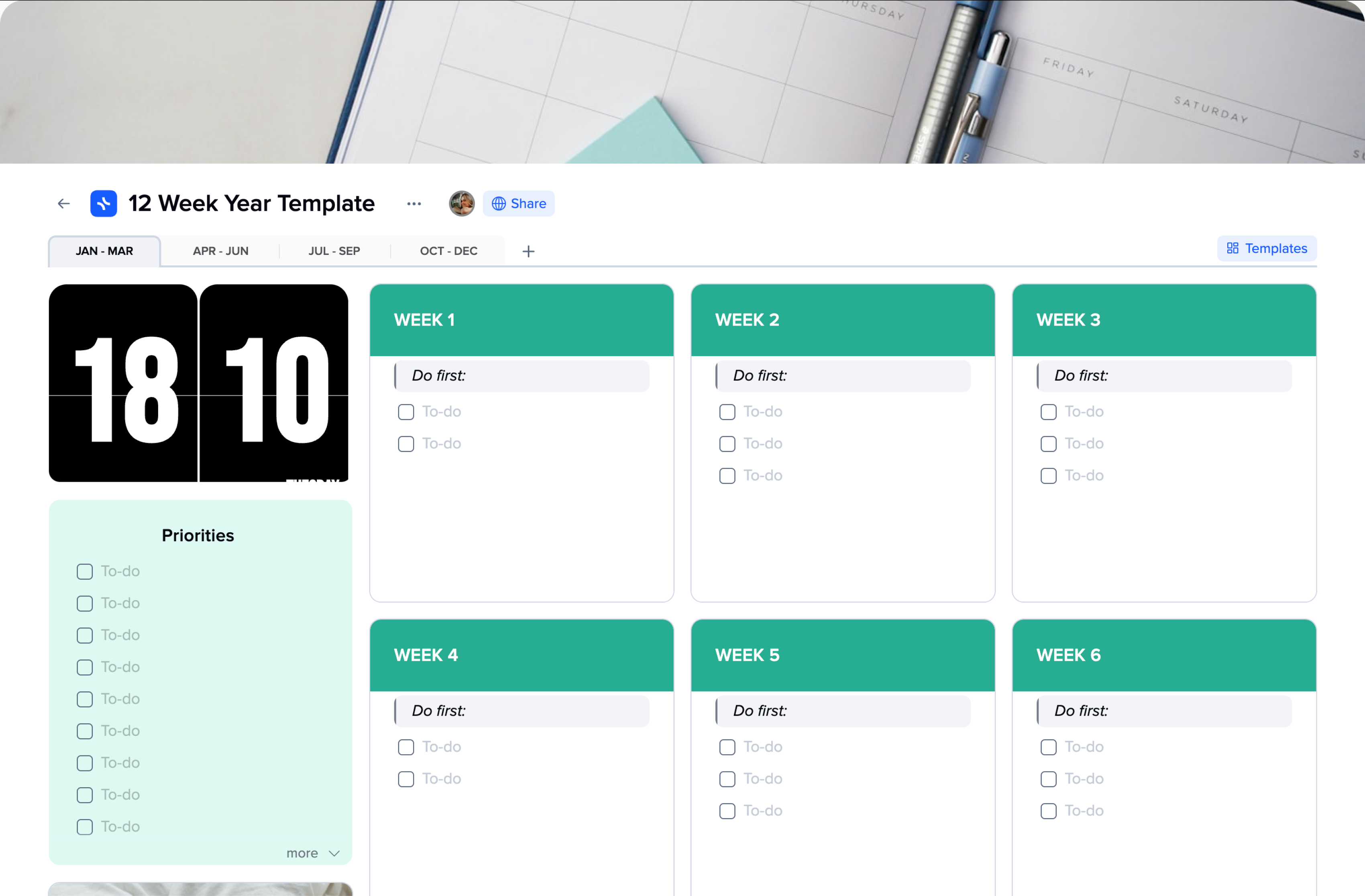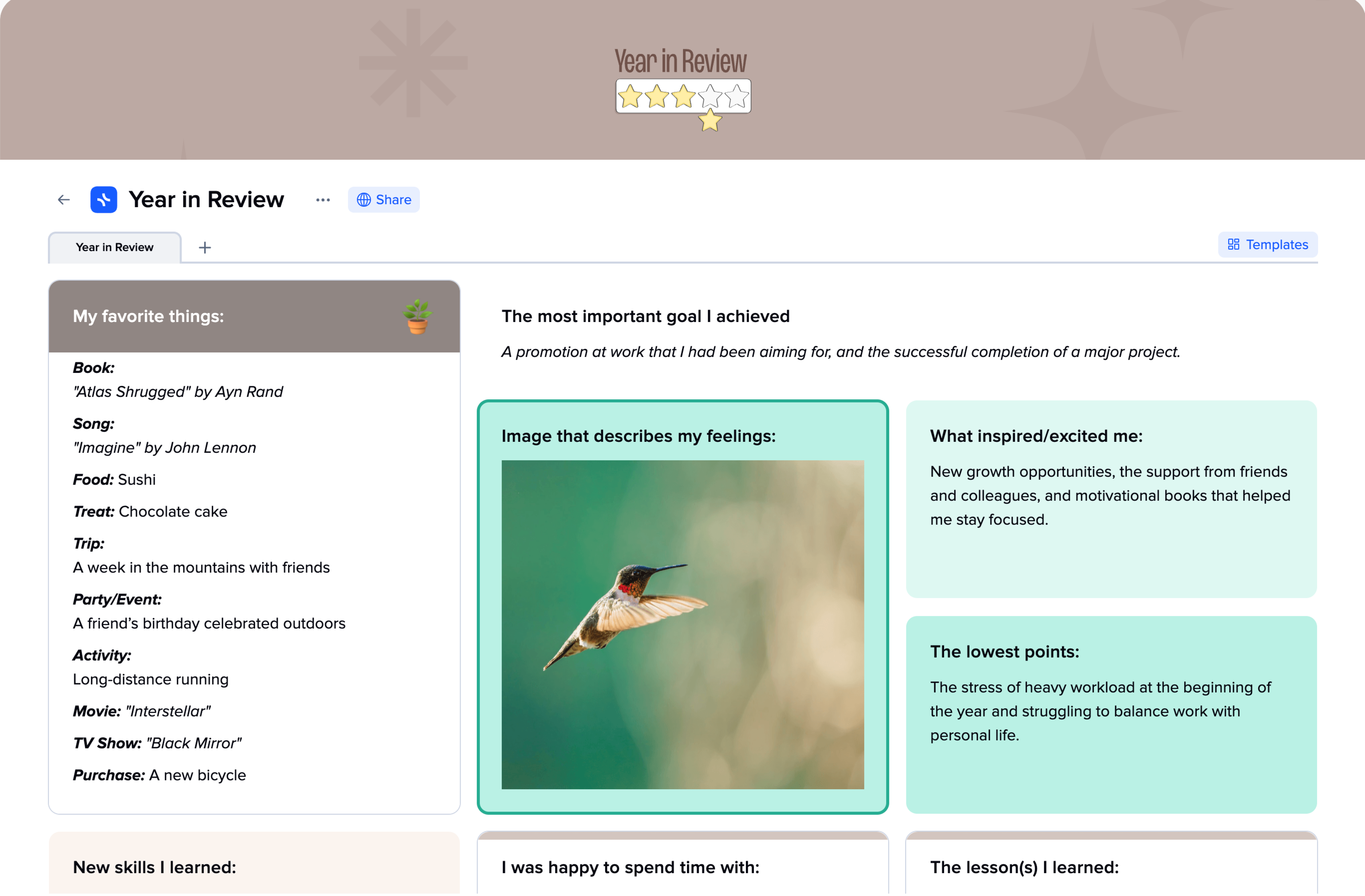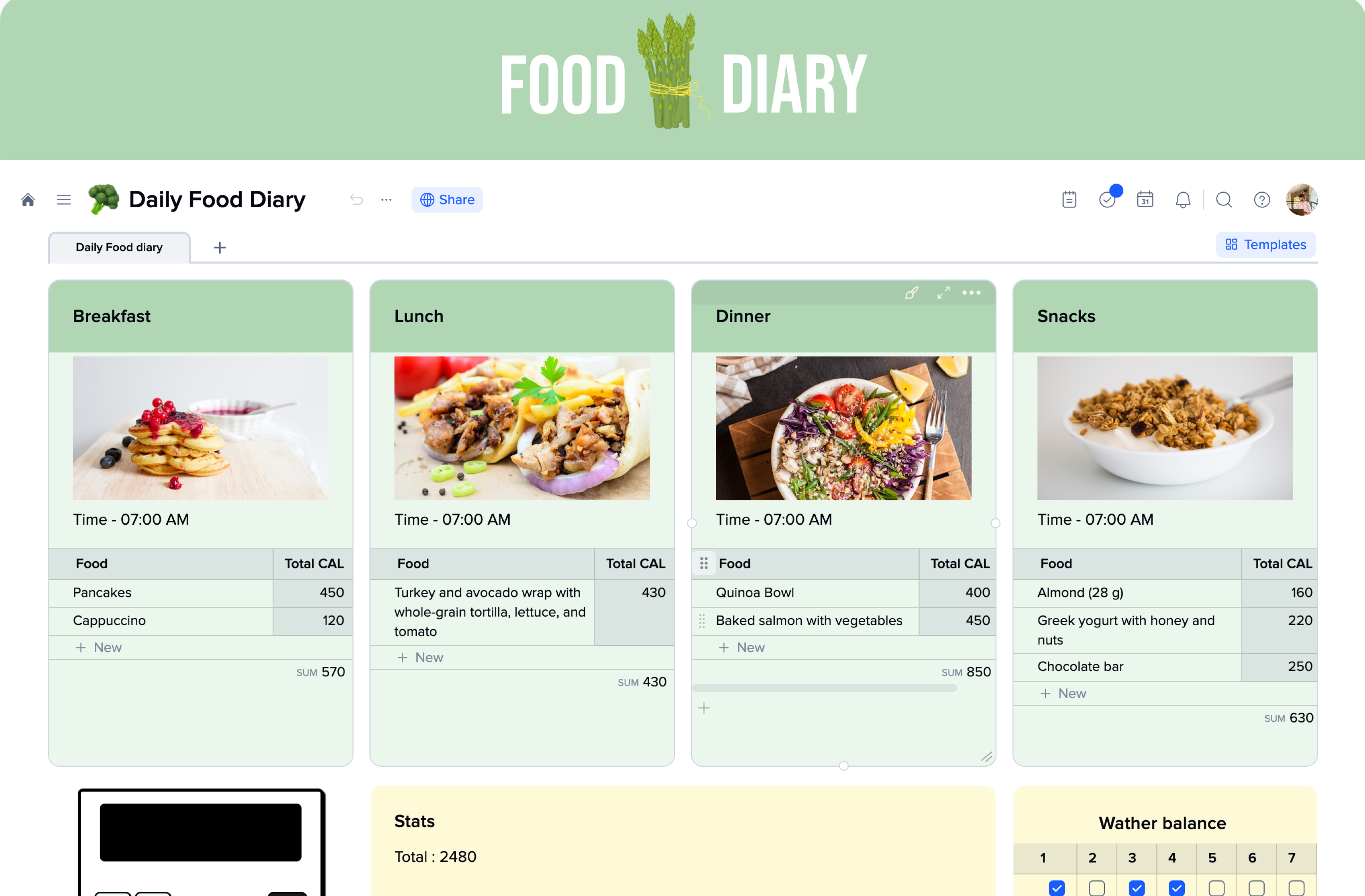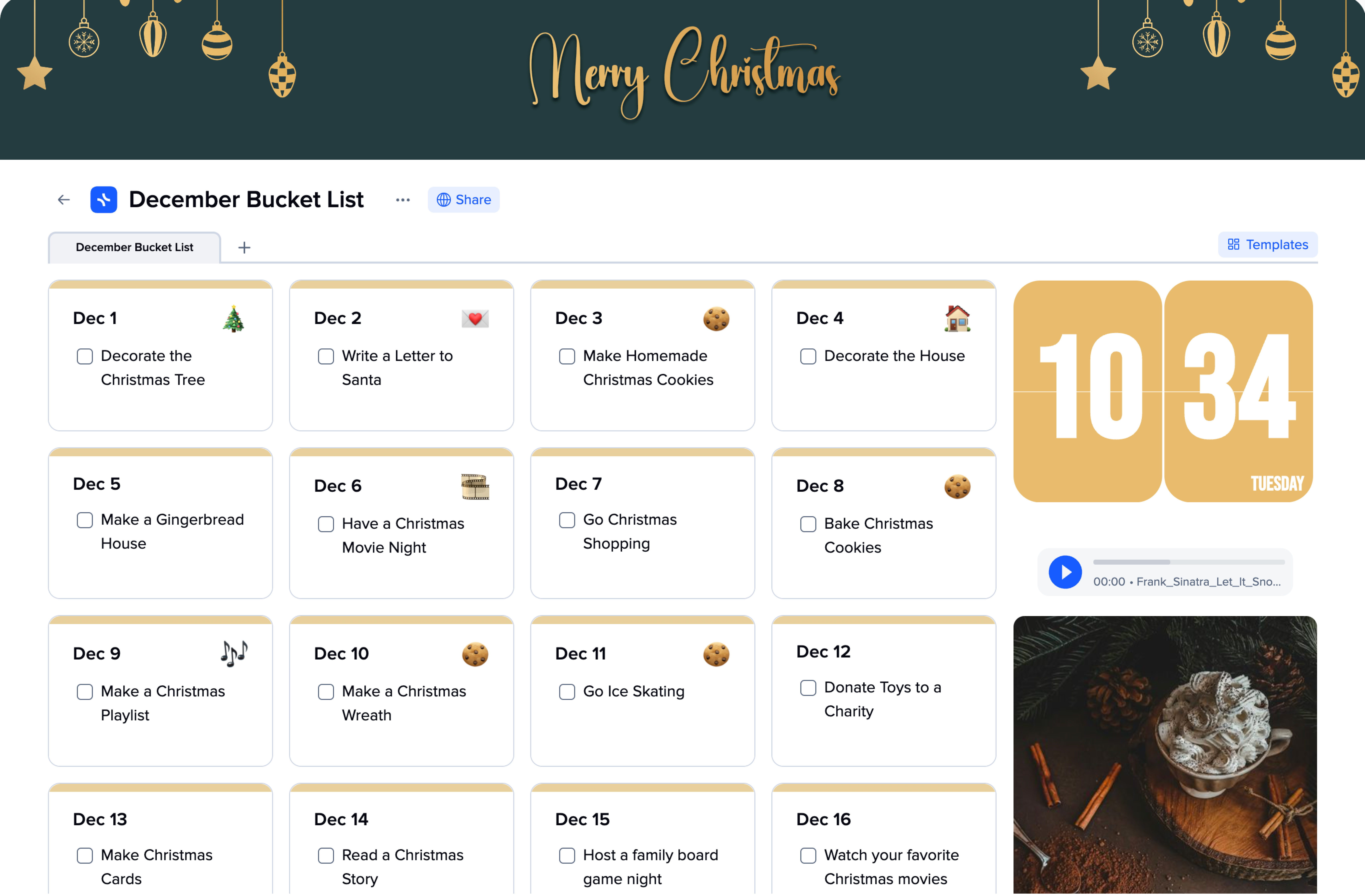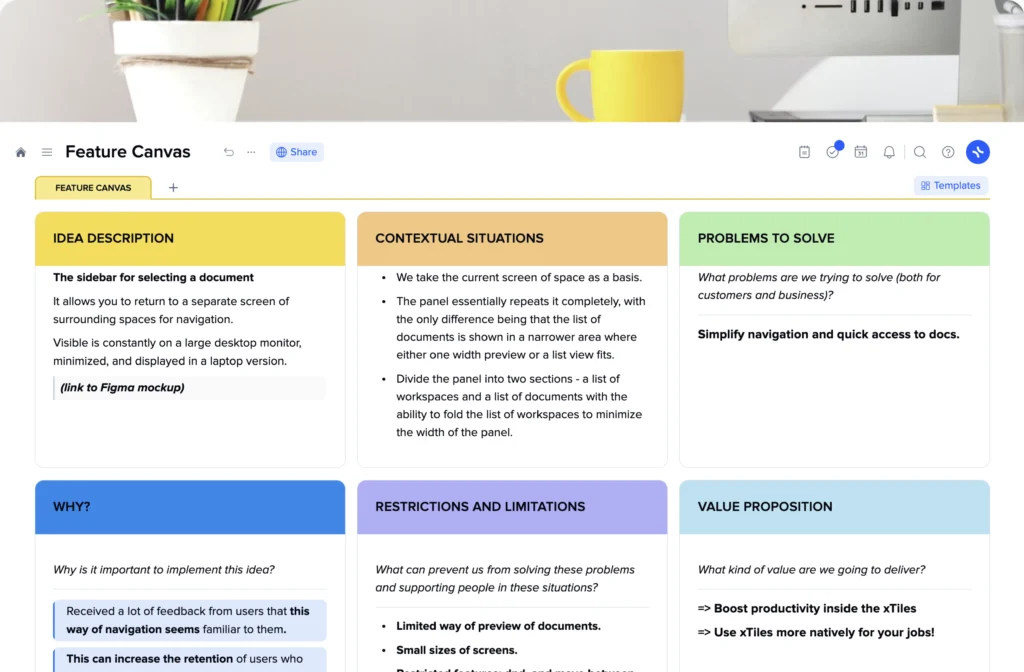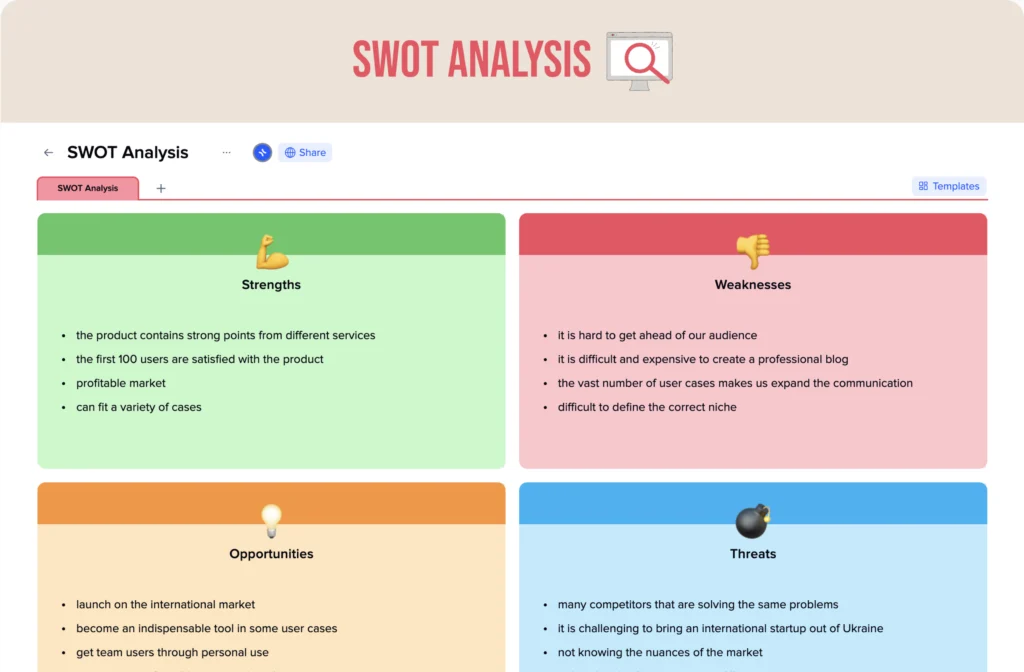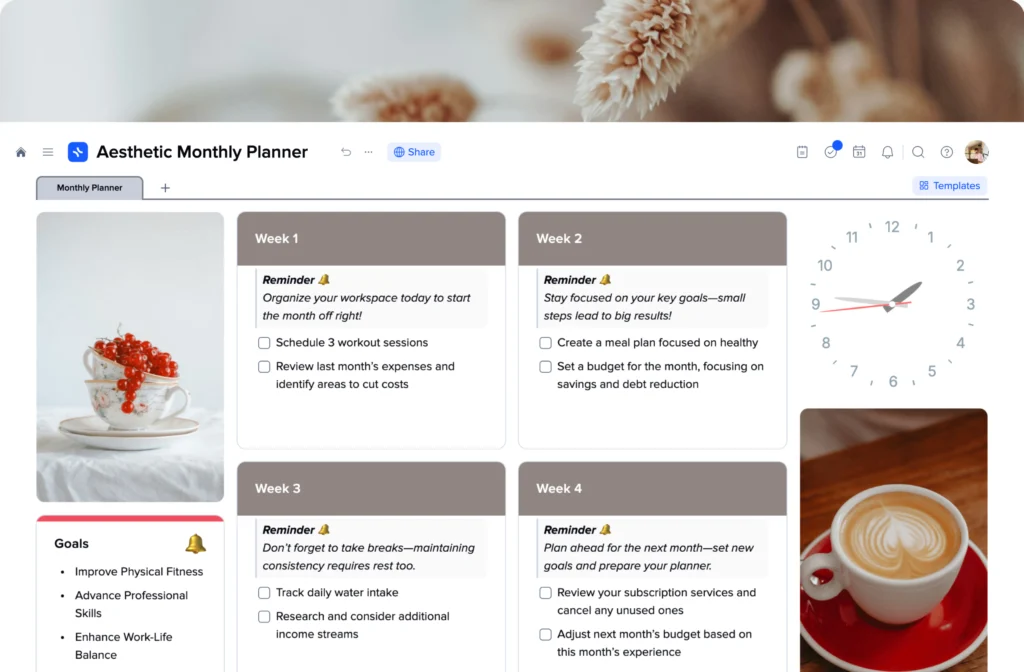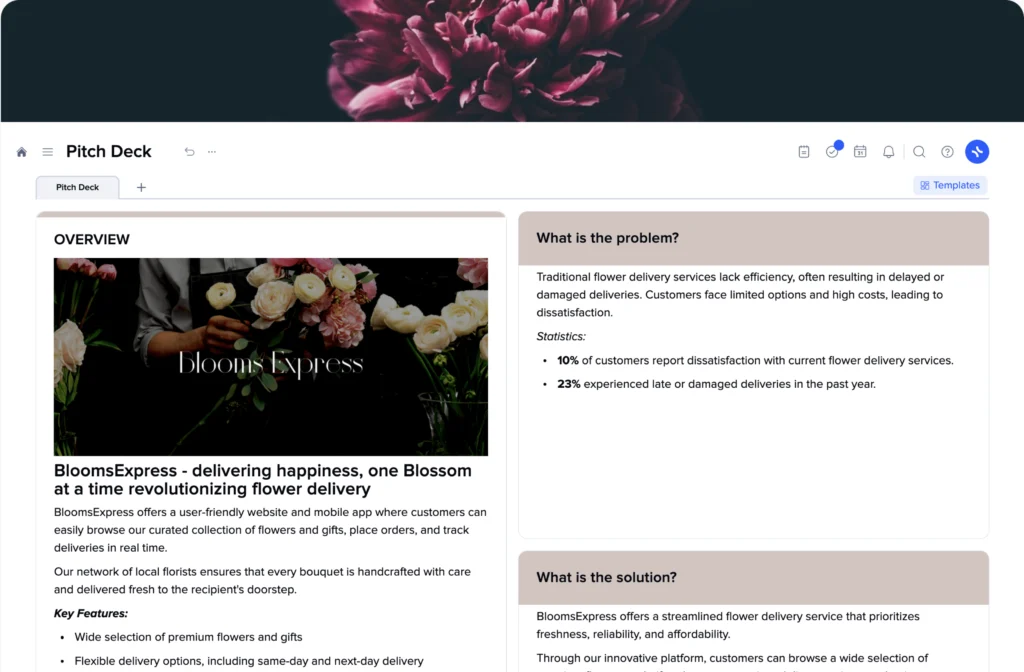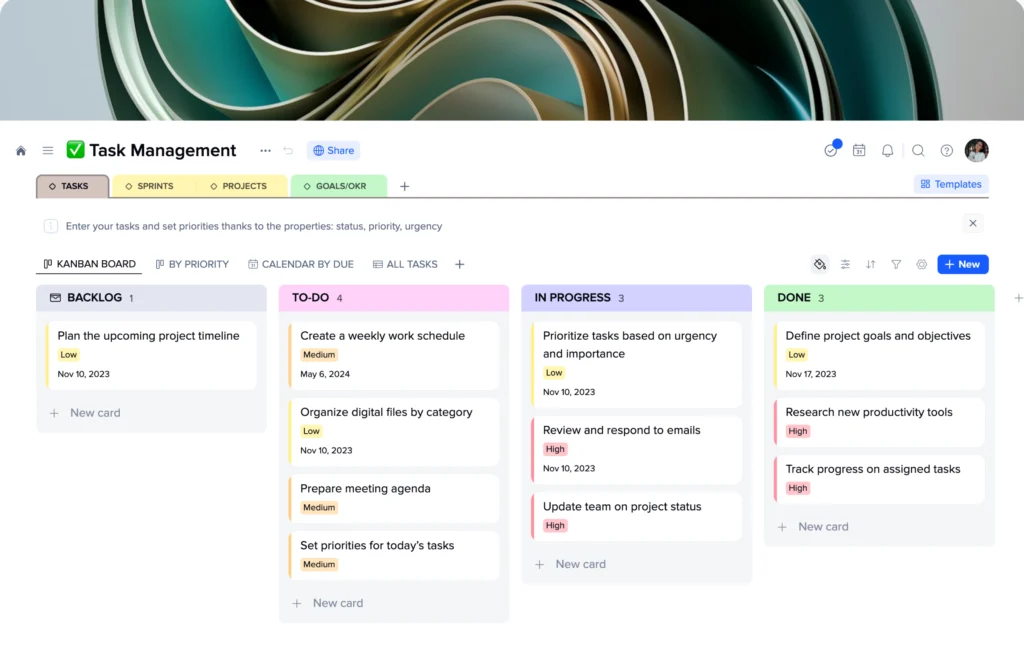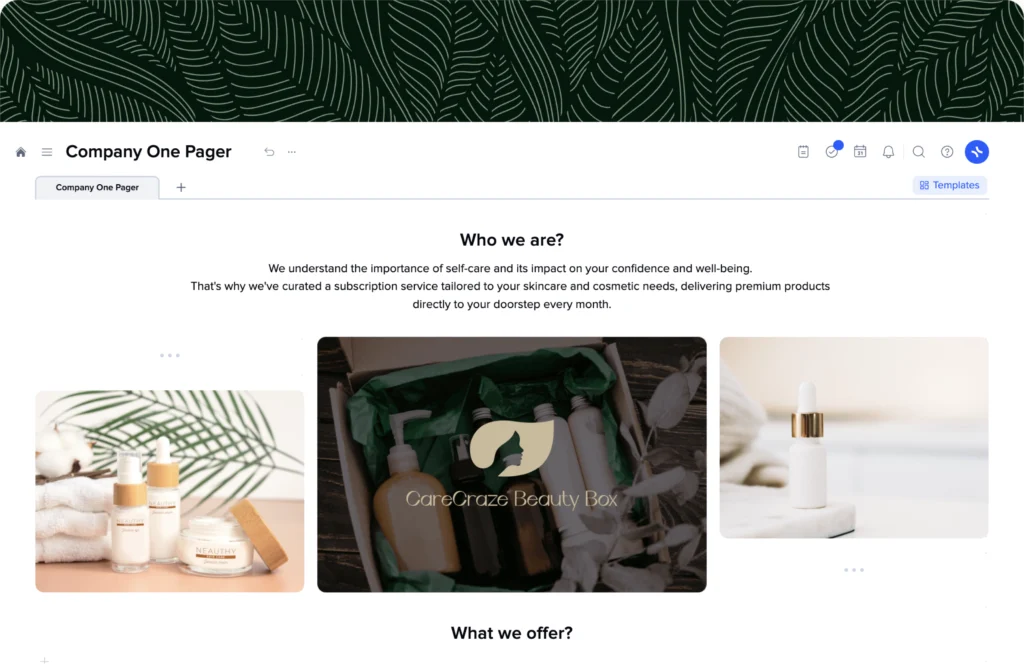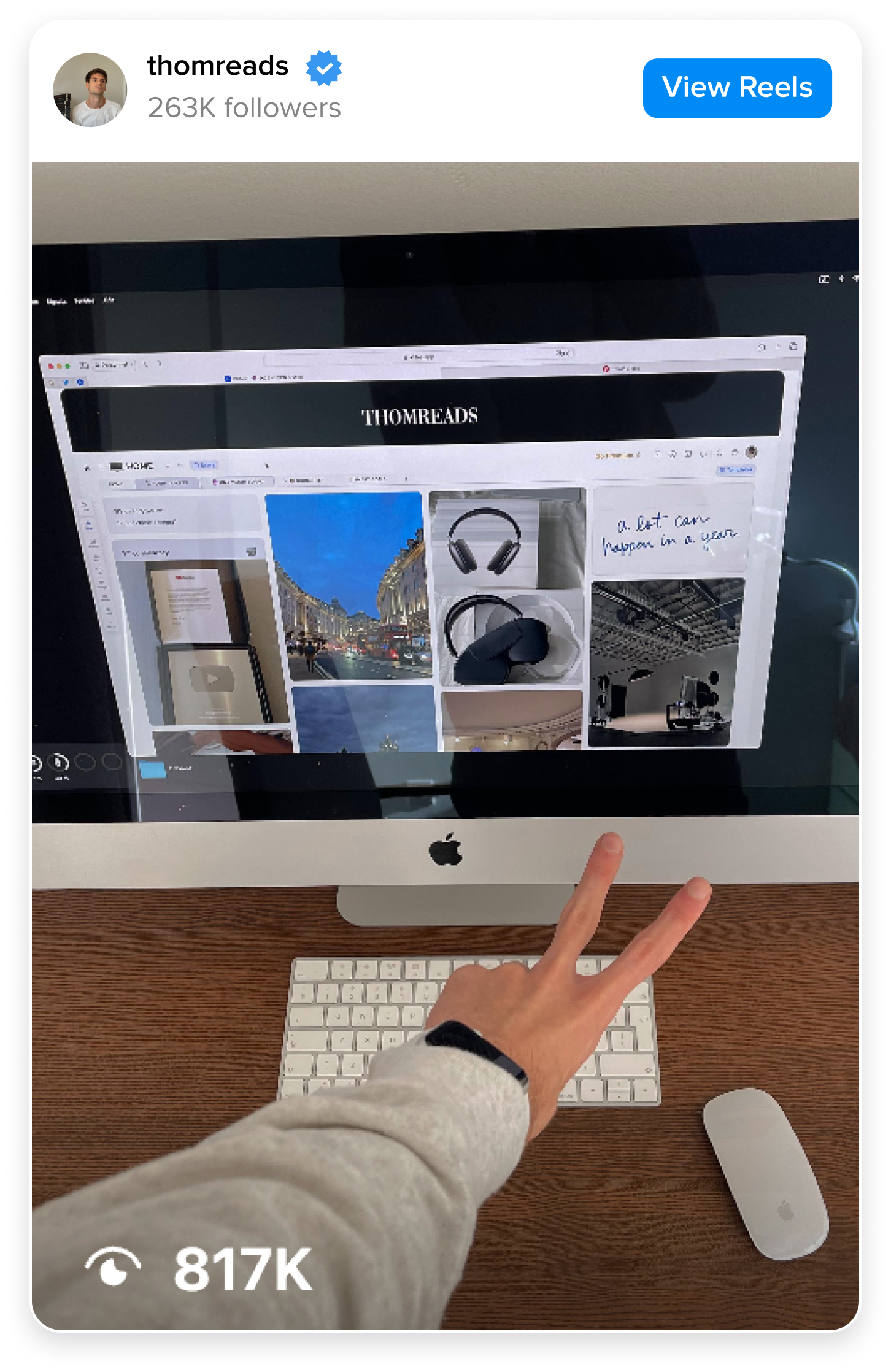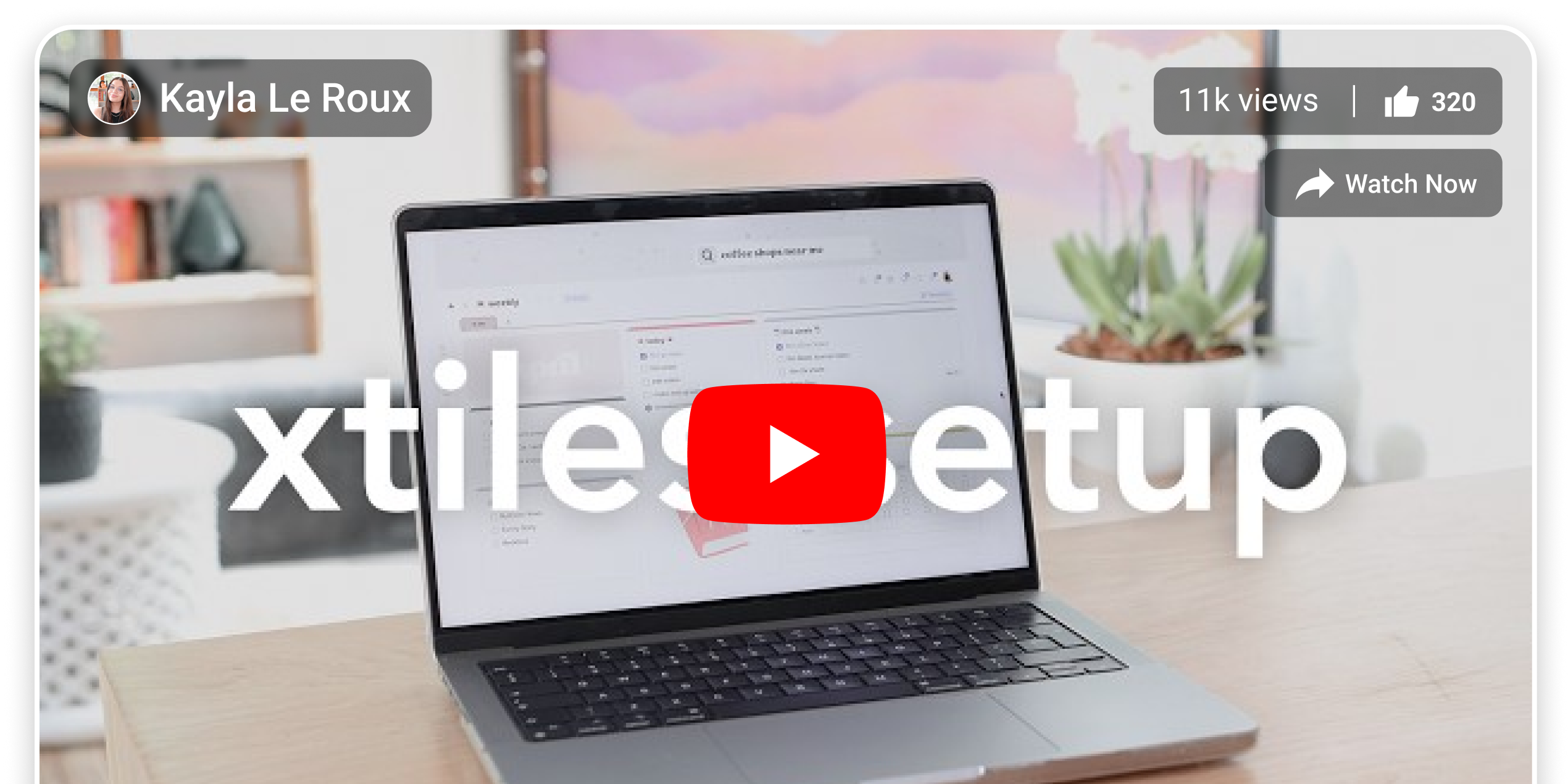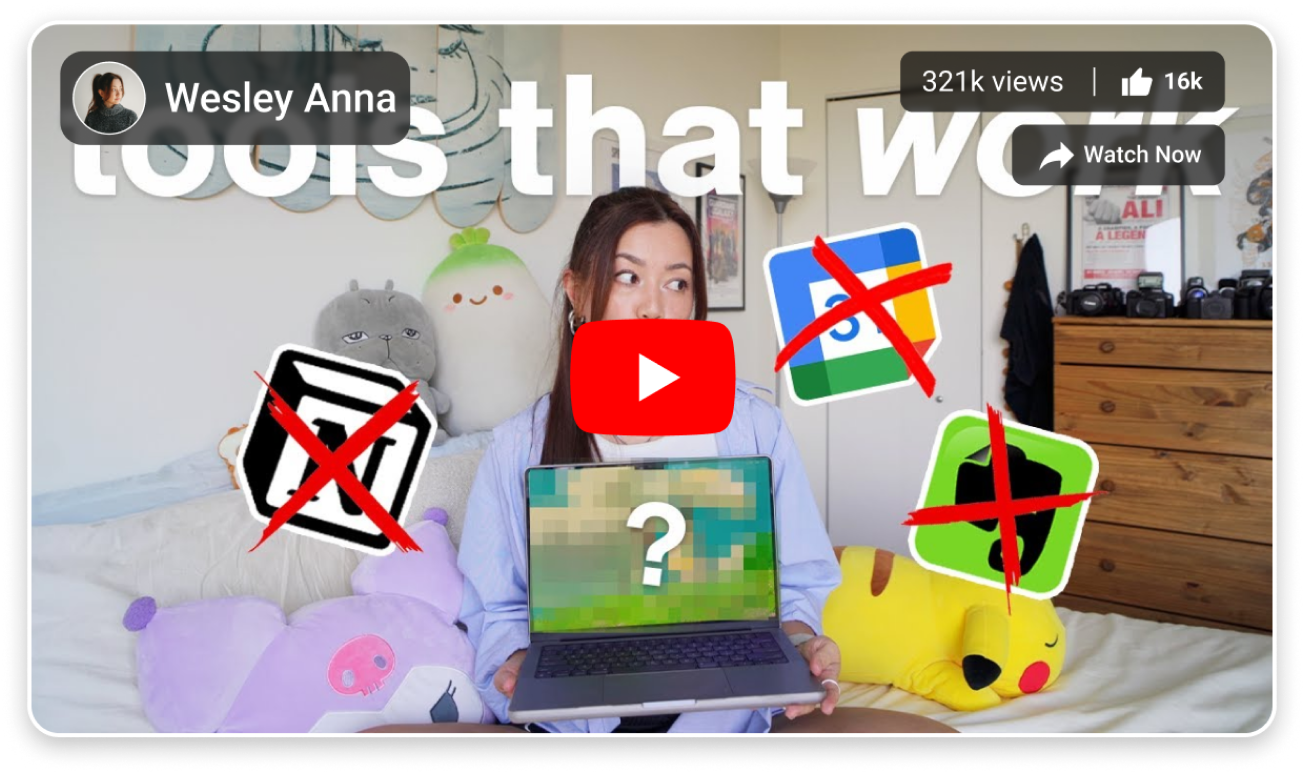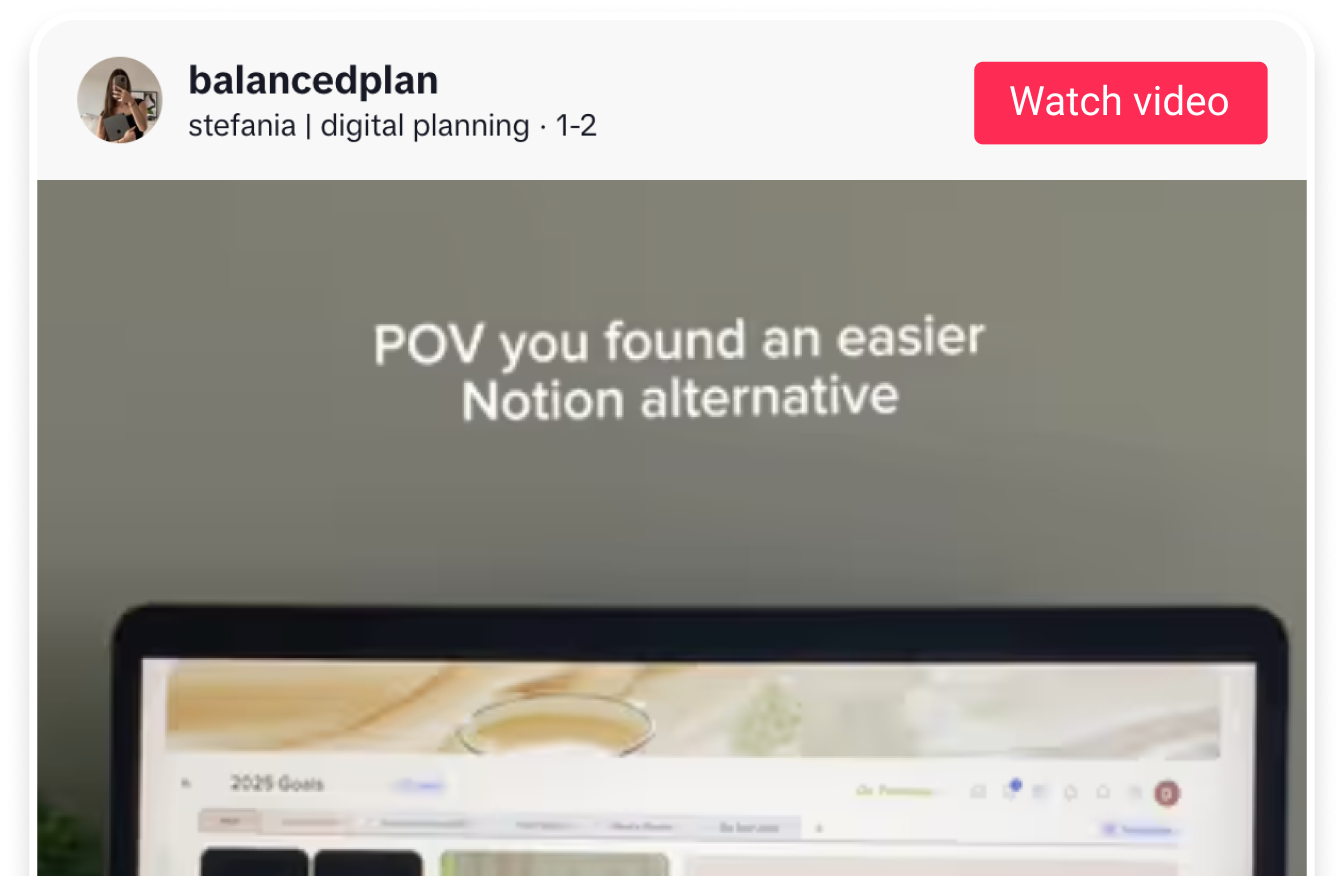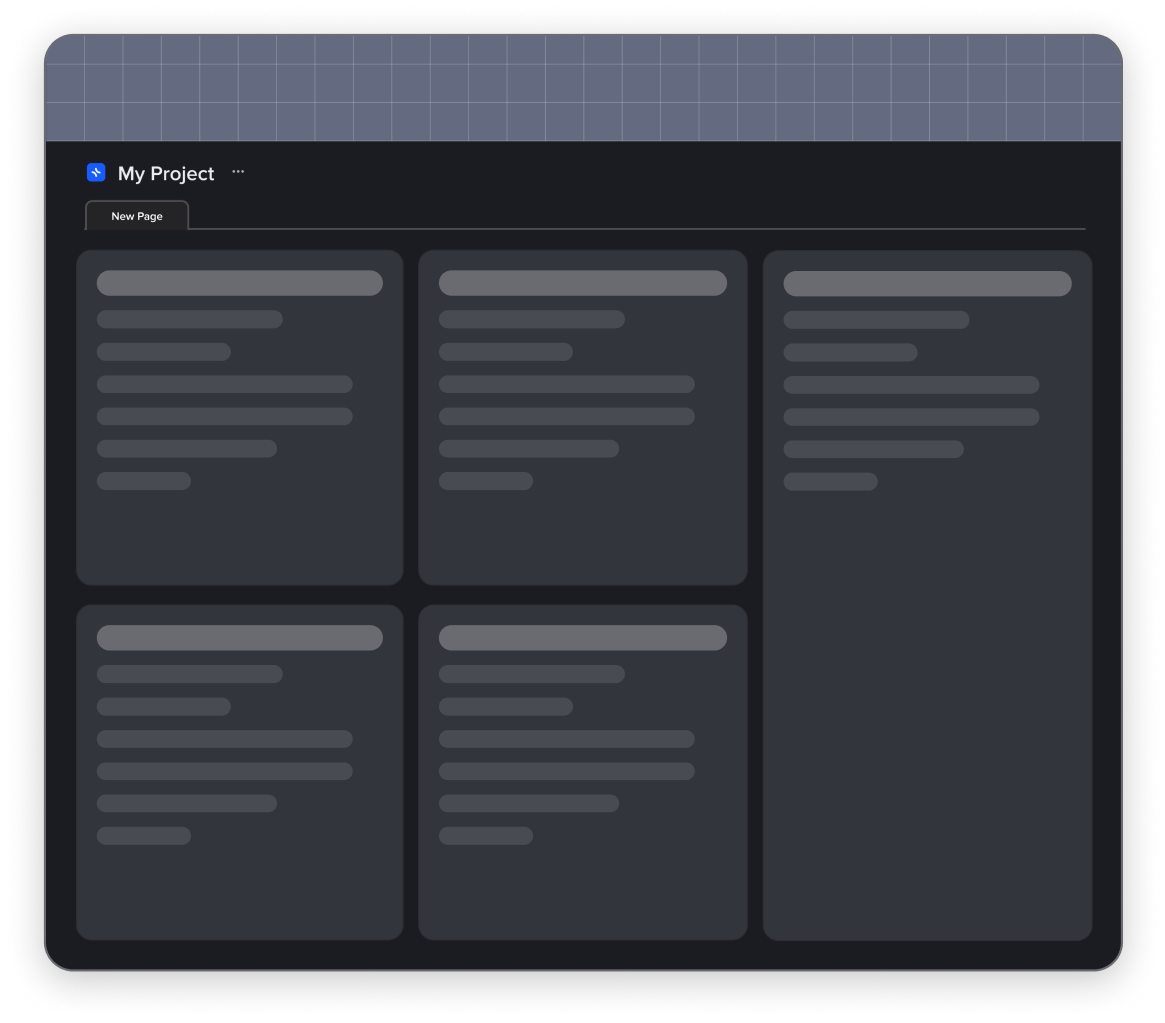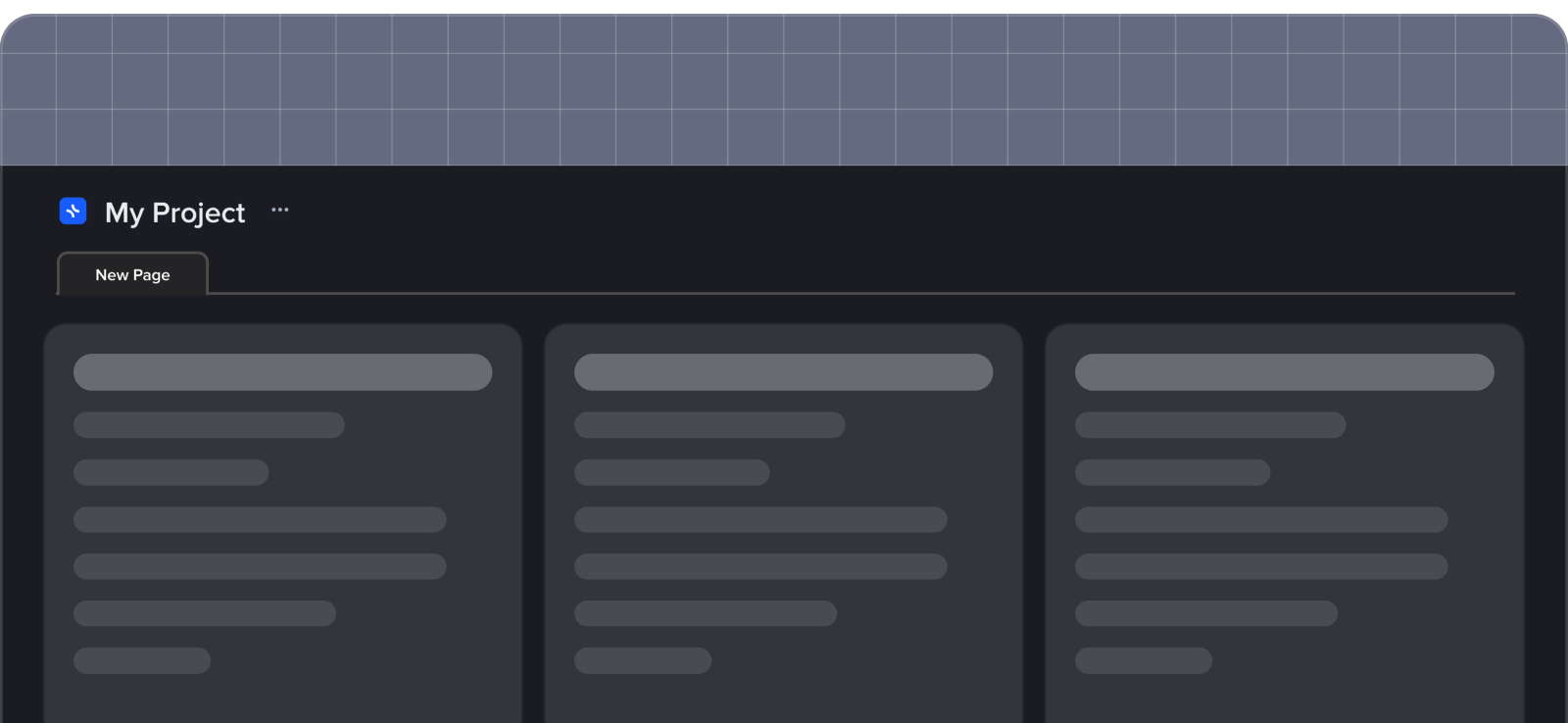How to track your mental health and mood with xTiles Mental Health Daily Tracker?
The xTiles Mental Health Daily Tracker Template consists of one page to help you keep focus while filling in your mental health data.
Start with identifying what your mood this morning is. You can change the color of the relevant mood to signify it is what you feel in the moment by clicking on the tile (a basic element of the page that consists of blocks of information). If you’re somewhere in between great and good or not good and awful, you can add a description to explain yourself. This data offers insights when you’re talking with your therapist or reflecting on your experience.
You may think that there’s not enough space in this section to describe what you feel, but start writing, and xTiles will adapt to your needs immediately. That works in all parts of your mental health tracker, allowing you to pour your soul whenever you feel the need. However, if you don’t like to ruin the tracker’s look, you can add a comment to the current mood.
Then, fill in how many hours did you sleep last night. If you use an Apple watch or any other smartwatch, you can track your sleep patterns easily. This is an important part of your tracker because not enough sleep or too many hours in bed might cause low mood. For better mental health, try to wake up at the same time and go to bed without your smartphone at the same time.
The next step is to write down your intentions regarding your mental well-being for a day. What do you want to focus on, what will be your priority, and what do you want to avoid during the day to keep your overall mood on a higher and stable level? This section is important because it helps you understand how well you can follow your mental health plans.
Then, you will have to create two to-do lists. One for your daily life activities, and the other one for your evenings. It depends on you whether those lists will be completely dedicated to your mental health goals or will also consist of your regular tasks, like finishing a project, doing dishes, etc.
The next section is for your reflections on your day. Choose the relevant mood among the emojis, but you can elaborate on your feelings in the dedicated section, just like you did in the morning. It’s important to go deeper than simply writing “I feel happy” or “I feel blue.” This tracker can help you understand yourself if only you add comprehensive data. Sometimes, people are more willing to describe their negative emotions, whereas they leave their happiness without description. Try to think about what made you happy during the day, so you can do it tomorrow.
Now, it’s time to say “thank you” to all the good things that happened to you during the day. It’s an important step of productive self-care that helps to grow little by little every day and appreciate even the smallest things in your life. You can be grateful to your family members, friends, partner, a stranger who smiled at you, etc. You can even be grateful for things like app features you didn’t know about earlier but saved you at work.
The next step is to think about what you like about yourself today. Think about a situation when your inner kid would be proud of you, like keeping your borders with others, saying “No” to people when you don’t want to do something, making progress in your cognitive behavioral therapy, etc. It can be literally anything. Remember that even the smallest achievements deserve to be acknowledged, especially if you only learn how to do these things.
Finally, think about what you want to feel during the next day. Set a tone for a day that is coming. Planning is a great way to escape anxiety and other factors that might affect your daily life. That’s why, except for the xTiles template for mental health tracking, you may also try other basic templates for planning, like daily or weekly planner templates. Check the relevant section in our template Gallery to find something you would like.
Also, the tracker has a built-in section for monitoring your water intake, as it has a significant effect on your mood. Don’t forget to stay hydrated during the day and don’t forget to fill in the relevant information. However, if water intake is a problem, you can use the xTiles tasks to schedule drinking every hour or so. The xTiles app on your phone will remind you when it’s time to take a sip.
Your daily mental health tracker can easily be turned into a weekly or monthly one. You can add a new page for every day, just duplicate the current one. However, be ready that after some time, it might be hard to get through all the tabs. That’s why you can create sub-pages that will help you keep your tracker neat. For example, you can add four sub-pages for one month, then the next tab with the other four sub-pages for another month, and so on.
